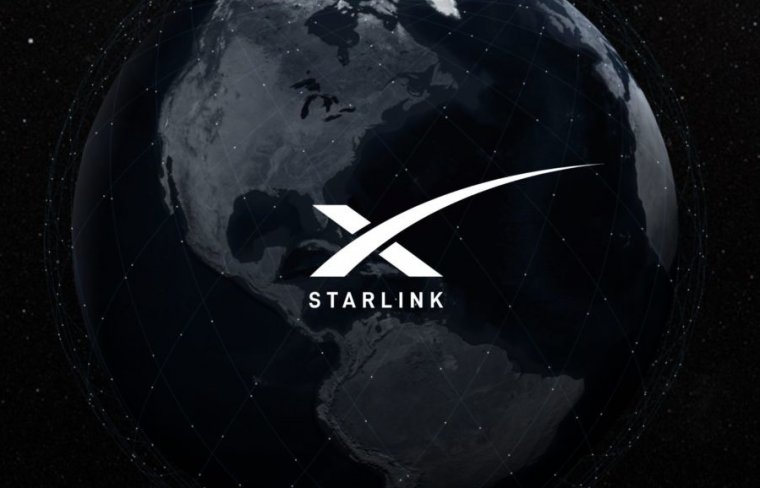
Amazon is urging US regulators to reject an update to SpaceX's plan for a second-generation Starlink system.
Kuiper Systems, Amazon's satellite-broadband subsidiary, says that SpaceX broke Federal Communications Commission rules by "propos[ing] two different configurations for the nearly 30,000 satellites of its Gen2 System, each of which arranges these satellites along very different orbital parameters. SpaceX's novel approach of applying for two mutually exclusive configurations is at odds with both the commission's rules and public policy and we urge the commission to dismiss this amendment."
Amazon summarized its views in a meeting with commission staff and in an ex parte filing on Wednesday that summarized the meeting, saying that SpaceX should be allowed to resubmit the amendment to its application only "after settling on a single configuration for its Gen2 System."
Bezos/Musk fights continue
In response to a PCMag article about Amazon's filing, SpaceX CEO Elon Musk took a dig at Amazon founder Jeff Bezos by tweeting, "Turns out Besos [sic] retired in order to pursue a full-time job filing lawsuits against SpaceX." The FCC proceeding isn't a lawsuit, but Bezos' Blue Origin recently sued NASA over a lunar-lander contract given to SpaceX.
SpaceX's Starlink division is providing broadband service in beta from about 1,600 low-Earth-orbit satellites, and it has FCC approval to launch nearly 12,000. In May 2020, SpaceX applied for a license to launch another 30,000 satellites at even lower altitudes to boost network capacity.
Amazon has US approval to launch 3,236 low-Earth-orbit satellites, but the company recently told Ars that 2023 is the earliest it expects to start. Amazon also objected to a previous SpaceX application but said it was satisfied with the outcome because of interference requirements imposed by the FCC.
SpaceX’s two proposals
SpaceX's FCC filing on August 18 proposed one configuration that "will more evenly spread capacity by latitude by targeting multiple inclinations, ensuring better, more consistent global coverage," along with a second configuration that "utilizes a smaller number of satellites per plane than Configuration 1, yet also spreads capacity more evenly by latitude for more consistent coverage across the globe." Another major difference between them is that "Configuration 1 fully leverages the upgraded satellite capabilities and the availability of Starship, bringing significantly increased capability to deliver satellites to orbit" while "Configuration 2 provides an alternative that also leverages the capabilities of the reliable Falcon 9 rocket," SpaceX said.
SpaceX said it prefers the first configuration but that neither of them requires "any additional spectrum or results in a significant increase in the potential for interference to any other spectrum user, including other NGSO [non-geostationary satellite orbit] licensees and current applicants."
Amazon says two proposals is one too many
Amazon wrote that the SpaceX approach forces the FCC and other parties to do twice as much technical work:
Forcing both the commission and interested parties to grapple with the interference concerns posed by two separate configurations doubles the technical effort of every operator faced with the task of reviewing the interference and orbital debris concerns raised by SpaceX's amendment. SpaceX points to this as a convenience, arguing that applying for both configurations will "enable the commission to evaluate both approaches even as development proceeds." It is SpaceX, however, that is required to evaluate and select among different approaches; both the commission and interested parties need only examine a single "comprehensive proposal."
Amazon contends that the SpaceX application violates a rule requiring applications to be complete and have no internal inconsistencies. The commission has said it applies the rule to avoid encouraging "speculative applications."
Amazon's filing continued:
Here, by leaving nearly every major detail unsettled—such as altitude, inclination, and even the total number of satellites—SpaceX's application fails every test that section 25.112(a)(1) enumerates. And with respect to the requirement that license applications contain a "comprehensive proposal," SpaceX's proposed amendment contains either two comprehensive proposals or none at all. The effects cascade throughout SpaceX's entire amendment. As one example, SpaceX is forced to seek a waiver of "the limitations in Schedule S" because, among other reasons, Schedule S does not allow it to "properly characterize the relationship between [its] two orbital configurations."
The FCC should insist that "SpaceX adhere to the well-settled framework under Part 25—namely, that licensees submit an application for a single system," Amazon argued.
SpaceX says this is the international norm
SpaceX acknowledged in its application that it is uncommon to ask the FCC to consider two alternative configurations, but the company argued that "it is consistent with the international approach to NGSO regulation." SpaceX wrote:
Although this application proposes alternative amendments to the pending application, this concept is familiar to those who submit satellite network filings to the International Telecommunication Union (ITU) to initiate the international process for deploying NGSO constellations. Specifically, in recognition that constellation designs mature through development, the ITU allows mutually exclusive configurations at the filing stage. Each of these mutually exclusive configurations is independently evaluated to determine whether it meets the requirements for a favorable finding. As the satellite system is deployed, however, only one configuration may be notified and brought into use. If a pending modification has been made but has not yet received favorable findings by the time the notification deadline arrives, a single backup mutually exclusive configuration can be specified and used in the event that the primary configuration is not found to be suitable.
We contacted SpaceX about Amazon's filing and will update this article if we get a response.
Business - Latest - Google News
August 28, 2021 at 03:35AM
https://ift.tt/3BkT9ao
Amazon urges FCC to reject SpaceX proposals for next-generation Starlink - Ars Technica
Business - Latest - Google News
https://ift.tt/2Rx7A4Y
Bagikan Berita Ini














0 Response to "Amazon urges FCC to reject SpaceX proposals for next-generation Starlink - Ars Technica"
Post a Comment